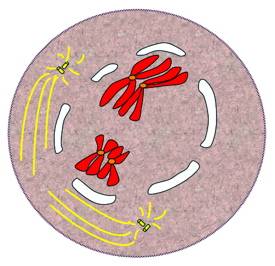

Throughout most of the meiosis process, ending in metaphase II, the sister chromatids stay attached to one another, bound at the centromere. The spindle fibers eventually extend all the way, moving the centrosomes to opposing ends of the cell, the poles.Įach of the chromosomes found within the cell at this point are made out of two sister chromatids, and these chromatids have genetic information that is identical. The spindle apparatus is created by long spindle fibers that extend from the two centrosomes within the cell. The nucleolus, the smaller organelle within the nucleus, disappears as well.

The nuclear envelope, the structure that surrounds the nucleus, breaks up, vanishing.

This makes the chromosomes visible under a light microscope. This means that during prophase I, the chromosomes condense, becoming thicker and shorter. What happens during prophase I of meiosis? What Happens During Prophase I?īy the time prophase I of meiosis begins, the chromosomes within the cell have duplicated and prepared for cellular division. However, unlike mitosis, meiosis goes through two round of cellular division, so there is prophase I and prophase II, metaphase I and metaphase II, etc. Meiosis creates daughter cells that possess half as many chromosomes as the parent cell, and meiosis proceeds through four different phases, just like mitosis does: prophase, metaphase, anaphase, and telophase. Mitosis is the process that creates new daughter cells from the original parent cells, while meiosisis a similar process that creates just one type of cell – sex cells, or gametes. The human body needs to create new cells to replace old, worn out ones.


 0 kommentar(er)
0 kommentar(er)
